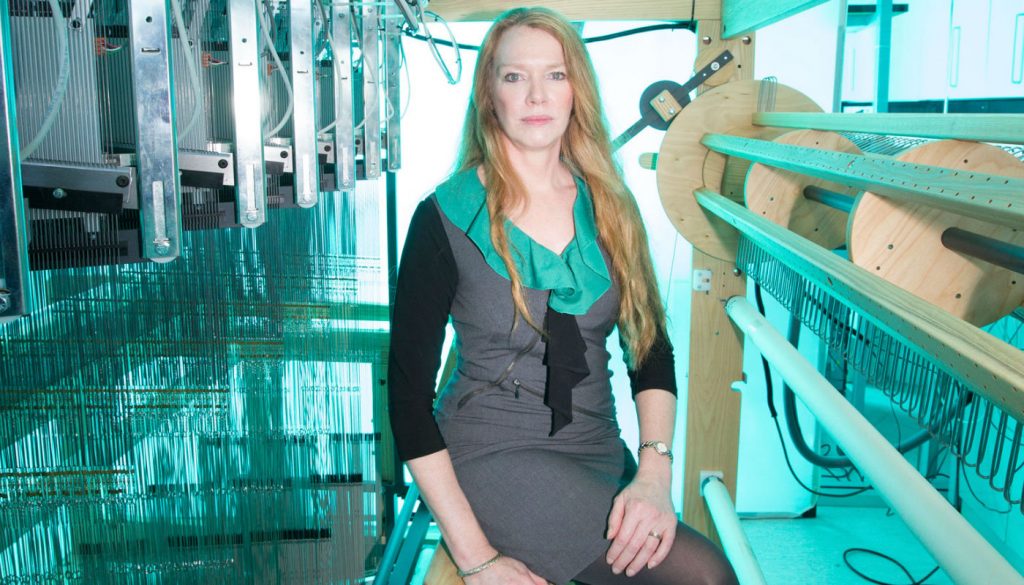Protective clothing that stiffens on impact could prevent injuries in dangerous sports and occupations.
Protective clothing that stiffens under high impact for skiers, racing-car drivers and astronauts are one of the potential applications for a new fabric developed by biomedical engineers at UNSW.
The fabric has been designed to mimic the sophisticated and complex properties of periosteum, a soft tissue sleeve that envelops most bony surfaces in the body. The complex arrangement of collagen, elastin and other structural proteins gives periosteum amazing resilience and provides bones with added strength under high impact loads.
UNSW Chair of Biomedical Engineering Professor Melissa Knothe Tate (pictured above) said her team had for the first time mapped the complex tissue architectures of the periosteum, visualised them in 3D on a computer, scaled up the key components and produced prototypes using weaving loom technology.
“The result is a series of textile swatch prototypes that mimic the periosteum’s smart stress-strain properties. We have also demonstrated the feasibility of using this technique to test other fibres to produce a whole range of new textiles,” she said.
In order to understand the functional capacity of the periosteum, the team used high fidelity imaging to investigate and map its architecture.
“We then tested the feasibility of rendering the periosteum’s natural tissue weaves using computer-aided design software,” Knothe Tate said.
The computer modelling allowed the researchers to scale up the patterns to weave multidimensional fabrics using a computer-controlled Jacquard loom. There are potentials for the fabric in other areas, with a tyre maker interested in a titanium weave that could spawn a new generation of thinner, stronger and safer steel-belt radials.
Melissa Knothe Tate is one of create’s 2017 Most Innovative Engineers for 2017. Nominations are now open for the class of 2018. To nominate yourself or someone else, click here.



